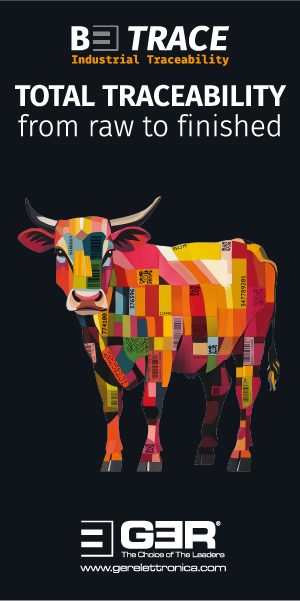Market Intelligence - 26.10.21
Macroeconomics
In the past two weeks, politics has been almost completely overshadowed by events in the financial markets and economy. Of course, geopolitical problems have not gone away and we will certainly hear more about this again in the near future, but media attention changes very quickly and focuses on what moves people most.
Probably the issues of inflation, energy supply and transport, with its impact on supply chains, are the most important. With regard to inflation, we already expressed our opinion some time ago. The position of the national banks, especially the European Central Bank, that inflation remains a temporary phenomenon, is beginning to show major cracks. The thesis can hardly be seriously defended any more. Inflation should also be used to determine whether the ordinary citizen is burdened by rising prices and not only as a scientific economic indicator. Inflation is now reaching 3%-6%, depending on the country, and this is not yet the end of the line. Since consumer goods prices are also calculated for at least the next year on the basis of current price conditions, it is safe to assume that prices will not fall again under any circumstances in the coming months.
A major factor behind rising prices is the increasing cost of energy. This is not just about price, but as we can see in the case of China, there are already seriously increasing supply disruptions; and we are still in October. We can hope that it is not a fundamental problem but only the consequence of faulty planning or political decision-making. A lack of energy would have such far-reaching political, economic and social consequences that it is better not to think about the consequences any further. However, we are of the opinion that this one is really a temporary phenomenon. There are still sufficient energy resources available and it is not their scarcity that is affecting the situation at the moment. Most governments will decide to use fossil energy instead of accepting supply shortages.
We consider the problem of supply chains and the governance issues that have always arisen from globalisation to be a decisive factor, one that will most influence the economic and political situation in the near future. What we are seeing and experiencing today is the ruthless exposure of the mistakes in politics and economics of the past. It is also clear from the way the problems are being dealt with that no one has come up with a plan B yet for this kind of problem. It is also not sensible or correct to blame the transport system exclusively for the problems. What has now occurred was simply not expected.
The fundamental problem also lies in the fact that an entire network has been torn apart and it does not help to concentrate only on patching up individual holes. There are simply too many balls in the air to keep them all moving in the near future. People around the world will not suffer a life-threatening shortage of anything, but it is probably better to be happy with the thought that for a while, the decision to want something, to choose it from a variety of options and then to get it the next day cannot be guaranteed. In any case, this challenges the over-supply of mass consumer goods and may have a significant impact on consumer purchasing behaviour in the years to come.
A brief look at the development of the pandemic is not particularly encouraging either. The fourth wave is already very dynamic in many countries and we can only hope that the hospitalisation rate and the number of severe, fatal cases will not increase to the same extent as the infections. Should the development continue to accelerate in the winter, then it can be assumed that we will have to expect certain restrictions in public life again.
The financial markets are not yet reflecting much of the unrest. Interest rates are not yet rising, and if they are, they are rising only very moderately. The stock indices are barely moving and individual positive and negative movements in individual stocks are mostly offsetting each other. Gold is starting to recover very cautiously and is slowly moving back towards the $1,800 mark. The oil price continues to move at a relatively high level, whereby short setbacks are immediately compensated.
The US dollar is also moving relatively little, but has interrupted its steady upward trend for the moment.
Leather Pipeline
In Europe, people are convinced that meat consumption must and will be reduced considerably. All kinds of plant-based substitutes are celebrated in the media and one has the impression that the growth is exponential and that the end of meat consumption is fast approaching. However, if you look at the hard facts, the situation looks somewhat different. Everyone in our field knows about the record slaughter in the US and the successful export of beef resulting from it. The same can be said for South and Central America. In other parts of the globe, including Asia, consumer behaviour does not change as quickly.
What we find much more remarkable, however, is looking at the share prices of the manufacturers of the celebrated meat alternatives. After a massive rise until the middle of this year, they are now just as quickly coming back down to earth having failed even to come close to fulfilling the great expectations that were placed on them. Turnover and orders are nowhere near the forecasts. The reference to the impact of the pandemic can only be seen as a tired excuse. Without a doubt, meat substitutes will find their market in the longer term and become a completely normal part of people’s shopping lists, but it will not be a boom or an extremely fast success story, which will certainly disappoint many climate activists. Media attention is not enough to change people’s needs and habits.
We are currently seeing different but significant influences on the situation in the leather industry. If you talk about Asia, there are the considerable production interruptions in south-east Asia and considerable cuts in production volumes in China owing to cuts in energy supply. We hear from our sources in China that the companies located in the heavily industrialised regions are suffering particularly badly. Not only do production times have to be shortened in general, but low-tech industries are also receiving very little support. In the other provinces, the situation is somewhat better, but it is probably appropriate to speak of an average 20% reduction.
Some companies are trying to save themselves with diesel generators during the times when the general energy grid offers no supply. Of course, this makes little sense with regard to environmental goals, but at the same time we hear that the authorities in these provinces are usually generous in overlooking this.
Besides the problems with energy supply, however, the unsatisfactory order and delivery situation remains a much bigger problem in China. Expectations and planning were much higher. Congestion and stockpiling are leading to considerable liquidity problems for many companies. All hope is now focused on the start of the typical autumn shopping season for Chinese consumers.
The weather is also changing in China and in a few weeks the big shopping event for Double 11 or Singles’ Day, November 11, is already on the horizon. Online retailers are already reporting a slow pick-up in clothing and footwear activity and now everyone is hoping that this will pick up strongly and accelerate consumption and sales. Export business continues to suffer from the problems in the transport sector, the massively increased costs and also from the fact that the flow of products on the export markets is burdened by various circumstances. To make the situation even worse, raw material prices are also falling at the moment, which is certainly welcomed by leather manufacturers but does not go unnoticed by their customers. Unfortunately, contract reliability is not always secure in such market phases.
Globally, production interruptions in the automotive industry are currently putting the greatest strain on the supply chain. The route from the slaughterhouse, via the leather industry to the car manufacturers is repeatedly stopped, and this has already led to considerable problems with the purchase of leather for several months. Orders are not being cancelled but the leather is not called off from contracts in the way anticipated and this has led to a build-up of stocks in the intermediate warehouses. Since the summer, many factories have had little choice but to reduce and in some cases even interrupt production. Since the automotive chain is considered to be reliable and constant in the demand mix for raw hides and has been a pillar for the sale of raw materials for years with an upward trend, the current situation is hitting the chain particularly hard. This can easily be seen in the price developments for hides, which are a particular determinant of production in this sector.
It is also noticeable that expectations of another successful season for furniture leather were high. The price of the raw material that is mainly used in this sector suffered less than others in past months. The levels had not risen that much, so that demand from other sectors for the relatively cheap hides still supported the outflow. However, expectations seem to have been higher than the current order situation. We can hope that the situation will improve as we are at the beginning of the season. However, difficulties in the real estate market in China are not a good indication of any significant improvement in sales of furniture.
For shoes, the long interruption to production in Vietnam is a burden; this does not only apply to leather shoes. It leads to an overall supply difficulty, as a number of these shoes cannot be compensated for in the short term at other production sites. Even now, production is running far below normal levels, so no real normalisation can be expected for the next six months. Overall, though, there is no sign of a recovery in the production and demand for leather shoes. Fashion, production reasons, price and ongoing restrictions to people’s social lives are still making things extremely difficult for leather footwear.
Luxury leathergoods manufacturers are reporting good figures. Hermès and Kering published very positive quarterly figures with clear double-digit growth. The mood continues to be very positive, with further increases in online sales and rising demand, especially in the American and Asian markets. However, one should not be completely blinded when comparing the figures with the third quarter of 2020, which, as we know, was still extremely affected by the decline due to the pandemic.
That not everything is completely positive can also be seen in the demand for high-quality calfskins, where only the absolute top qualities are selling very well, while the next level is already experiencing considerable difficulties in relation to price and demand.
Europe is in some ways a reflection of the above. Due to the lower slaughter and relatively positive expectations for the autumn-winter season, tanners had already positioned themselves relatively well from spring onwards and hedged with raw material. This continued into September and resulted in the raw material market in Europe being able to hold significantly higher levels and for much longer than expected. The spread between prices in Europe and prices from other origins widened. This made relatively little impression on suppliers and was not particularly noticed.
In the last few weeks, however, the big picture has changed significantly. In Europe, too, the supply chain in the automotive sector has begun to pile up considerably, with little positive news regarding developments in the coming months. The same is true for other sectors and the leather industry realised very quickly that its stockpiling is significantly higher than current demand for the next few months. As a result, we are increasingly hearing from our sources that tanners are asking their suppliers to put deliveries on hold. This is relatively easy to do with salted material, however it leads to considerable challenges with fresh, chilled hides. We are only at the beginning of this and significant increases in slaughter levels have not yet started, but without a quick improvement the situation will become very challenging for the rest of the year.
In the meantime, prices are also reacting and the main problem remains that the need for adjustment goes beyond the normal market trend; the differences with other origins have to be closed first. The difficult situation in the meat industry in Europe does not make any discussion about prices any easier.
It is not difficult to share the opinion of many who see the problem not only in the eternal discussion about prices, but rather in sufficient sales of raw material in the coming months. The question is whether Chinese customers, in particular, will be willing to buy raw material speculatively again when prices reach favourable levels.
The market for split remains difficult, even if some report that the start of production in Vietnam is at least providing some relief. It is also true, of course, that the decline in the production of hides naturally leads to a decline in the production of splits. Sales of splits for collagen and gelatine production have also started their seasonal increase. However, as this area is very energy-intensive, the increased energy costs are weighing heavily on this sector. However, depressed margins, if any, will certainly not weigh on production.
In lambskins, the production of light summer skins in Europe is now rapidly coming to an end. There are only a few segments that are running more or less regularly. On the one hand, there is the top segment for nappa skins, so that the absolute top qualities, for example from South Africa, are now reaching record prices. Good business continues to be reported from fine, high-quality wool skins. The producers of high-quality decorative skins are also still active, but it is shocking to see copies made from synthetic fibres on offer in large quantities in the big department stores this winter. This is pure plastic and it is absolutely incomprehensible how environmentally conscious retailers can offer such an inferior product to consumers. Climate activists would have a field day.
We have been stating our views and market assessments time and again for several months now. So there is no need to say again that we are convinced that the leather industry still faces major challenges. The unfortunate thing remains that there is little foresight. People are still driven by the moment and by hope instead of gathering their own information and coming to their own conclusions.
The next few weeks will certainly remain very difficult. We need a quick recovery in demand and perhaps consumers’ fear of inflation will help. If people expect prices to rise they may prefer to buy now and we can already see this methodology in other sectors of the economy. However, the core problem remains the same. Without a renaissance of the material, there will be no real improvement and recovery of the business. Simply buying the raw material because it looks cheap is not a solution.












